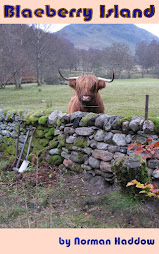Wednesday 31 October 2012
Dry Stone Exhibit
This demonstration of dry stone walling was built by Andy Loudon and team. The floral design was created by Andy's wife. A great combination
Friday 26 October 2012
Early Form of Trullo
This dry stone hut shows how the early Trulli were constructed in the South East corner of Italy.This type of building was later transformed into substantial houses in Pulgia . Many of the farms had a series of these dry stone buildings cleverly joined together to accommodate whole familes and their animals in winter. Mortared versions came later and in modern times many newcomers are buying them and converting them into very comfortable homes.
Monday 22 October 2012
Watchdog
This fine Sculpture was looking after the activities at the recent Festival of Stone at St. Marthe in Canada.
Thursday 18 October 2012
Wednesday 17 October 2012
A Lovely Stone Table
I saw this feature in the garden where I was staying for part of my recent visit to Canada. It was built by Colin Shaw-Rimmington who is a well respected Toronto Chef. He is not a mason but I believe he managed to combine beauty with function in a way which many of our professional wallers find difficult to achieve.
Saturday 13 October 2012
Pictish ring Marks
The later Pictish markings were Cup and Ring incisions. Again the significance of these is not understood . They are found in many parts of the Celtic world , this one in Argyll near Lochgilphead is thought to be around 3000 years old.
Tuesday 9 October 2012
Friday 5 October 2012
Progress at Milton Eonan
These photos show the results of two restoration sessions at one of the oldest settlements in Glen Lyon in Scotland. Volunteers spent their weekends creating a beautiful area enclosed by dry stone walls with turf coping. Lovely to see this activity in an area where the first known records date back to the 8th century!
I posted the earlier work on 22 June this year.
Monday 1 October 2012
Pictish Stones
This standing stone near Lochgilphead in Scotland has a large number of Pictish cup marks . The markings like these were early signs on rocks (at least 3000 years ago) which are not understood by modern archaeologists. Some believe they are maps of good ground or springs, others that they have religious significance.
Subscribe to:
Posts (Atom)












